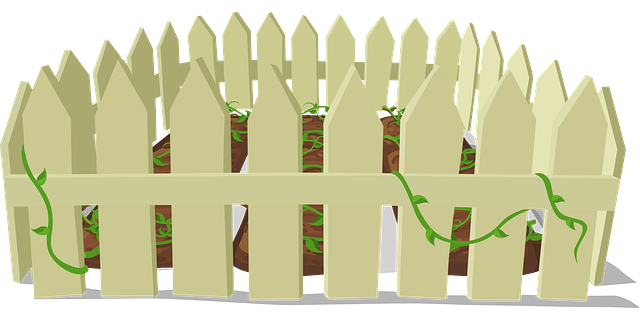Large properties present unique fencing challenges, requiring solutions that balance durability, aesthetics, and affordability. This article explores cost-effective fencing options tailored for extensive landscapes, examining the evolving landscape of materials and design. From traditional to innovative approaches, we delve into durable materials that demand less maintenance while offering long-lasting beauty. Furthermore, practical installation tips ensure longevity, empowering homeowners to make informed choices enhancing their outdoor spaces.
- Understanding Large Property Fencing Needs
- Traditional vs. Cost-Effective Solutions
- Durable and Low-Maintenance Materials
- Design Options for Every Budget
- Installation Tips for Longevity
Understanding Large Property Fencing Needs
Fencing a large property presents unique challenges compared to smaller plots. The primary consideration is not just aesthetic appeal but also functionality, security, and cost-effectiveness. Owners of expansive land often require fences that can withstand harsh weather conditions, manage wildlife, and provide a clear boundary, all while remaining affordable.
The size and topography of the property play significant roles in determining suitable fencing materials and designs. For instance, robust, durable materials like high-density polyethylene (HDPE) or steel might be ideal for areas with heavy traffic or challenging terrain. Alternatively, natural options such as wood or stone could offer a cost-saver while still providing effective separation. Understanding these factors is crucial in selecting the right fencing solution that balances functionality, aesthetics, and budget.
Traditional vs. Cost-Effective Solutions
Traditional fencing methods often involve expensive materials and labor, making them less accessible for large property owners on a budget. These conventional solutions typically include wooden or metal posts, rails, and panels that require regular maintenance to prevent rot, rust, and other deterioration. The costs can quickly add up, especially for extensive perimeter fences.
Cost-effective fencing solutions offer an attractive alternative by prioritizing affordability and low-maintenance design. New technologies and innovative materials have enabled the creation of durable, functional barriers without breaking the bank. These modern options often include advanced composite materials, vinyl, or chain link that resist rot, rust, and damage from elements, reducing long-term maintenance expenses.
Durable and Low-Maintenance Materials
When it comes to fencing large properties, opting for durable and low-maintenance materials is a practical choice. Modern fencing solutions offer an array of options that are designed to withstand harsh weather conditions and minimize upkeep. Materials like vinyl, aluminium, and certain types of wood, treated with preservatives, are excellent choices. Vinyl fencing, in particular, is known for its longevity and ability to retain its aesthetic appeal without the need for frequent painting or sealing.
Aluminium fences provide a lightweight yet robust alternative, resistant to corrosion and requiring minimal maintenance. They can be easily installed and offer a wide range of styles, from traditional to contemporary designs. Treated wood also remains a popular choice due to its natural beauty and ability to break down organically over time. These materials ensure that your fencing stays in top condition, enhancing the value and curb appeal of your large property without demanding constant attention.
Design Options for Every Budget
When it comes to fencing large properties, there’s no one-size-fits-all solution. Luckily, cost-effective options cater to every budget, offering both functionality and aesthetic appeal. For those seeking a simple yet sturdy option, traditional wooden fences are a popular choice. They can be constructed using pressure-treated lumber, making them durable and relatively low-cost.
On the other end of the spectrum, vinyl fencing is an excellent investment for those who desire a maintenance-free option with endless design possibilities. Vinyl comes in various colors and styles, from traditional picket fences to sleek, modern designs. Additionally, composite materials offer a sustainable and long-lasting alternative, combining the best of wood and plastic for a unique, visually appealing fence that requires minimal upkeep.
Installation Tips for Longevity
When installing fencing for large properties, focusing on longevity is essential to ensure a cost-effective solution that stands the test of time. One key tip is to invest in high-quality materials – cheaper options may save initial costs but can lead to more frequent replacements down the line. Steel or vinyl fences are durable choices known for their resistance to rot, rust, and damage from wildlife. Ensure proper soil preparation before posting to prevent uneven settling and post holes that could cause stress on the fence.
Regular maintenance is also crucial. Cleaning the fence regularly removes debris that can attract pests or cause damage. Apply fresh coats of paint or sealant every few years to protect wood fences from elements, and check all connections for stability. Proper installation includes angling posts slightly away from each other to accommodate natural ground movement, using concrete to secure posts firmly in place, and spacing vertical pickets evenly to avoid weak spots.
